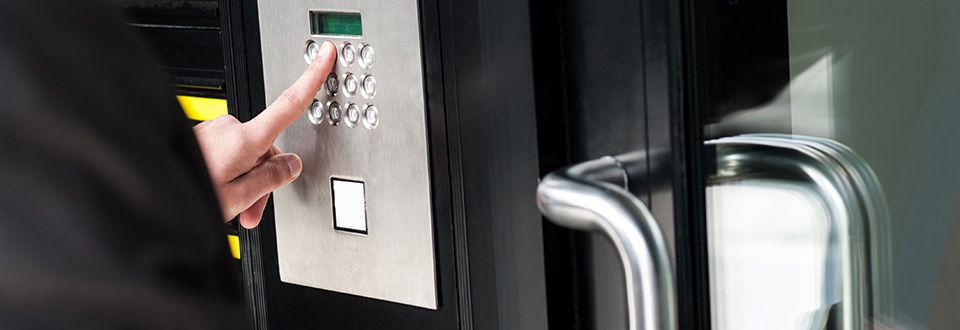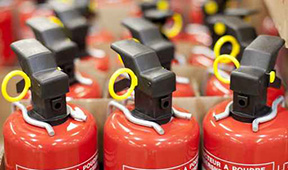Services
Fire Risk Assessment
The responsibility for having a Fire Risk Assessment carried out lies with the person appointed as the person who has responsibility for fire safety as per the regulations laid out and contained within The Fire (Scotland) Act 2005.
The relevant section is Part 3 of the Act which specifies who has responsibility for fire safety in non-domestic premises in Scotland.
A recent change in the law means that though you may never have had responsibilities for fire safety before, it is possible that you may find that under the new law you now have some responsibilities. For instance If you operate your business from non-domestic premises, or have an HMO (House of Multiple Occupancy) that requires a licence, then it is you who are responsible to ensure that a Fire Risk Assessment is carried out and also that it keeps pace with any changes to The Act.
If The Person Responsible is found to have failed in ensuring the documentation is kept up to date with changes in the regulations then a failure to comply charge could result in personal prosecutions and/or imprisonment.
This could also have a detrimental effect on your insurance cover which could be invalidated.
A Fire Safety Risk Assessment Explained.
A fire safety risk assessment is an organised and methodical survey of the premises in question, establishing the risk of a fire occurring, and what damage it could cause, and, what harm it could bring to anyone inside and around the property at the time of a fire occurring.
The existing fire safety measures shall be noted and re-evaluated to decide if they comply with requirements, and, or, if they are lacking in any areas which require further measures to be put in place.
To identify any and all relevant hazards and reduce the risk of those hazards causing harm to as low as is reasonably practicable and achievable.
To determine what fire safety measures and management policies are necessary to ensure the safety of people in the building should a fire occur. There are five steps that apply in the fire risk assessment process
- Identify people at risk
- Identify fire hazards
- Evaluate the risk and decide if existing fire safety measures are adequate
- Record fire safety risk assessment information
- Review of fire safety risk assessment
Fire Protection Alliance Ltd have over 25 years experience in various disciplines in the fire protection industry, and, we can provide a fully compliant report which will highlight any fire risks in the building or in work practices.
We will produce a recommendation sheet with suggestions of how to remove or reduce any fire risks found to be present during survey.
All risks will be designated for the level of risk presented and will be either high, medium or low classification.
Fire Protection Alliance Ltd will retain a copy of the Fire Risk Assessment carried out on your behalf and also a copy of your action plan in our premises in order to comply with current legislation.
As every building is different in shape size and risks present, costs can only be provided following a free survey when we will work out a cost for the fire risk assessment.
Fire Safety Training
Fire Safety training for employees became a legal following the publication of the Fire Safety Order in 2005 and employers should recognise the importance of this training to make employees aware of the requirements so they can assist in protecting lives, property and business.
Common sense dictates that employees should be shown how to act in the event of a fire occurring, and, it is incumbent upon the employer to provide this training.
Our course is for a maximum of 10 delegates and its duration is approximately 3 hours this training will be carried out at clients premises.
The course programme consists of the following:
- Fire Precautions Regulations/Legislations
- Chemistry of fire and how it spreads
- Common causes of fire
- Action on discovering a fire
- Classes of fire and extinguisher types
- Calling emergency services for assistance
- Hazard spotting/hazard reduction
- Daily and Weekly Fire Checks
- Record Keeping
- Fire extinguishers – Practice and theory with live fire demonstration if possible
On completion of the above all attendees will receive a dated certificate.
Dry Riser Testing
Dry Risers are systems of valves and pipework which enable the Fire and Rescue Service to deliver water onto the upper floors of a building. A Dry Riser will generally be required where any floor is over eighteen metres above ground level.
Fire Protection Alliance Ltd, service and maintain Dry risers for use in emergency situations.
Digi monitoring ( single path )
A digital communicator is fitted to the alarm system and connected to the existing telephone line at site, this allows the alarm to send digital signals to the monitoring station i.e Fire, Intruder, Intruder confirmed, P.A, open/close, Abort as well as things like Mains fail or Low battery. The monitoring station will issue the relevant response i.e Police, Fire brigade , Patrol and response guard and/or Key holders.
However if the phone line is cut or is faulty the system can no longer contact the monitoring station and the monitoring station will not know there is a fault or receive any signals.
Traditional Redcare ( single path )
A Redcare communicator is fitted to the alarm system and connected to a BT Redcare phone line at site which has to be set up with BT on some occasions it may be on a dedicated redcare line which involves additional line rental and set up costs , this allows the alarm to send digital signals to the monitoring station i.e Fire, Intruder, Intruder confirmed, P.A, open/close, Abort as well as things like Mains fail or Low battery. The monitoring station will issue the relevant response i.e Police, Fire brigade , Patrol and response guard and/or Key holders.
However if the phone line is cut or is faulty the monitoring station know there is a fault with the phone line and will contact Key holders ONLY alerting of the fault.
Dual com GPRS or Redcare GSM
A Redcare GSM or Dualcom GPRS communicator is fitted to the alarm system and connected to an existing phone line at site, this allows the alarm to send digital signals to the monitoring station i.e Fire, Intruder, Intruder confirmed, P.A, open/close, Abort as well as things like Mains fail or Low battery. The monitoring station will issue the relevant response i.e Police, Fire brigade , Patrol and response guard and/or Key holders.
However if the phone line is cut or is faulty the monitoring station will still receive all signals via the built in GSM mobile phone path allowing still the correct response to be sent i.e police, fire brigade etc.







 Emergency Signage
Emergency Signage
 Hand Held Fire Extinguishers
Hand Held Fire Extinguishers
 Fixed Fire Suppression Systems
Fixed Fire Suppression Systems





